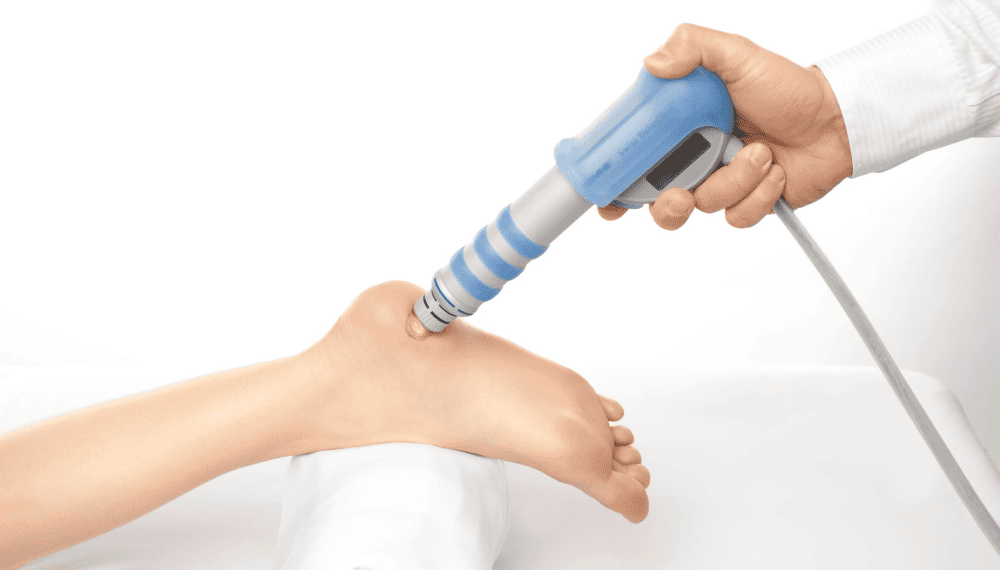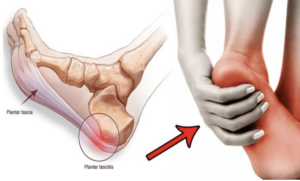Plantar fasciitis is a common foot condition that affects many people, causing heel pain and discomfort. It occurs when the plantar fascia, a thick band of tissue that runs along the bottom of the foot, becomes inflamed or damaged. This condition can be very painful, making it difficult to walk or stand for long periods of time. In this article, we will discuss the symptoms of plantar fasciitis and the various treatment options available.
Symptoms of Plantar Fasciitis
The symptoms of plantar fasciitis typically include pain and stiffness in the heel and arch of the foot. The pain is often described as a sharp, stabbing sensation that occurs when standing or walking. The pain may be worse in the morning or after long periods of inactivity. In some cases, swelling and tenderness may also be present in the heel or arch.
Treatment Options for Plantar Fasciitis

1. Rest and Ice Therapy
Rest and ice therapy are two of the most effective treatments for plantar fasciitis. Resting the affected foot can help reduce inflammation and allow the plantar fascia to heal. During rest, it is essential to avoid any activities that cause pain and to minimize weight-bearing on the foot.
Ice therapy is also very effective in reducing inflammation and pain. Applying ice to the affected area can help reduce swelling and numb the pain. Ice therapy can be done by placing an ice pack or bag of frozen peas on the affected area for 15-20 minutes at a time, several times a day.
When using ice therapy, it is important to wrap the ice pack or bag in a towel or cloth to prevent direct contact with the skin. Direct contact with the skin can cause tissue damage and frostbite. It is also important to avoid leaving the ice pack on for too long, as this can also cause tissue damage.
Rest and ice therapy can be used together or separately, depending on the severity of the plantar fasciitis. In many cases, rest and ice therapy can provide significant relief from pain and inflammation, and can help speed up the healing process.

2. Stretching Exercises
Stretching exercises can be very effective in treating plantar fasciitis. Regular stretching can help reduce tension in the plantar fascia and surrounding muscles, which can help relieve pain and inflammation.
One simple stretch that can be done at home is the calf stretch. To do this stretch, stand facing a wall with one foot in front of the other. Place your hands on the wall at shoulder height and lean forward, keeping your back leg straight and your front knee bent. Hold the stretch for 30 seconds and then switch legs.
Another effective stretch is the plantar fascia stretch. To do this stretch, sit in a chair and cross one foot over the other knee. Hold the toes of the crossed foot and gently pull them back towards the ankle, until you feel a stretch in the arch of the foot. Hold the stretch for 30 seconds and then switch legs.
It is important to perform these stretches regularly, at least once or twice a day, to see the full benefits. Additionally, it is important to avoid overstretching or bouncing, as this can cause further damage to the plantar fascia. If you experience any pain or discomfort during stretching, stop and consult with a healthcare professional.

3. Arch Supports and Orthotics
Arch supports and orthotics are common treatments for plantar fasciitis. These are devices that are designed to provide support and cushioning to the feet, which can help relieve pressure and reduce pain in the plantar fascia.
Arch supports are relatively inexpensive and can be purchased at most drug stores or online. They are typically made from soft, cushioned materials and are designed to fit inside shoes. Arch supports work by distributing weight evenly across the foot and supporting the arch, which can help alleviate pressure on the plantar fascia.
Orthotics are custom-made devices that are specifically designed to meet the unique needs of each individual. They are typically prescribed by a healthcare professional and are made from a variety of materials, including foam, plastic, and carbon fiber. Orthotics work by providing more specific support and cushioning to the foot, which can help reduce pain and improve mobility.
Both arch supports and orthotics can be effective treatments for plantar fasciitis, but it is important to choose the right type of device for your individual needs. It is also important to ensure that the device fits properly and is comfortable to wear, as ill-fitting or uncomfortable devices may actually worsen symptoms. A healthcare professional can help guide you in choosing the best device for your needs.

4. Night Splints
Night splints are a common treatment for plantar fasciitis. These are devices that are worn on the foot and ankle during sleep to keep the plantar fascia and Achilles tendon in a stretched position. This helps prevent the plantar fascia from tightening and contracting during the night, which can cause pain and stiffness in the morning. Night splints are typically recommended for people with severe or chronic plantar fasciitis. They can take some time to get used to, but many people find them effective in reducing pain and improving mobility.

5. Extracorporeal Shock Wave Therapy (ESWT)
Extracorporeal Shock Wave Therapy (ESWT) is a non-invasive treatment for plantar fasciitis that uses high-energy shock waves to stimulate the healing process in the affected area. This treatment is typically used for patients who have not responded to other conservative treatments such as rest, stretching, and orthotics.
During ESWT, a device is used to send shock waves to the affected area. The shock waves help increase blood flow to the area and stimulate the growth of new tissue. The procedure usually takes 15-30 minutes and is performed on an outpatient basis.
ESWT is generally safe and effective, with minimal side effects. Some patients may experience temporary pain or discomfort in the treated area, but this typically subsides within a few days. The number of treatments needed varies depending on the severity of the plantar fasciitis, but most patients require 3-5 treatments, spaced several weeks apart.
While ESWT can be an effective treatment for plantar fasciitis, it is not recommended for everyone. Patients with certain medical conditions, such as pregnancy or a history of blood clots, may not be suitable candidates for ESWT. It is important to consult with a healthcare professional to determine if ESWT is a suitable treatment option for you.
6. Surgery
In severe cases of plantar fasciitis, surgery may be necessary to remove the damaged tissue or to release tension in the plantar fascia. This is typically a last resort and is only recommended after other treatment options have been tried and failed.
Prevention Tips for Plantar Fasciitis
There are several steps you can take to prevent plantar fasciitis from occurring:
1. Wear supportive shoes that fit properly.
2. Avoid walking barefoot on hard surfaces.
3. Stretch your feet and calves regularly.
4. Gradually increase the intensity and duration of your physical activity.
5. Maintain a healthy weight to reduce the strain on your feet.
6. Consider using arch supports or orthotics if you have flat feet or high arches.
Conclusion
Plantar fasciitis can be a painful and debilitating condition, but with the right treatment and prevention strategies, it can be managed effectively. Rest, ice therapy, stretching exercises, arch supports, ultrasound therapy, night splints, ESWT, and surgery are all treatment options for plantar fasciitis.
If you would like to find out more about ModPod’s plantar fasciitis treatment then click here.



